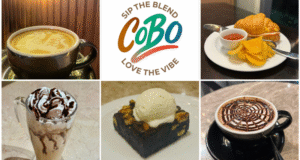
For the second summer running, women with places to go and bling on all their fingers have heralded the sunshine with fizzing orange manicures: Aperol spritz nails.
“It is refreshing and puts you in a good mood,” wrote one journalist after the actor Zendaya posted an apricot-tipped selfie last year, listing the many ways (ombré, glowing, pastel, arty, French, jelly, hearts and floral) you might follow suit. “I went for the brightest orange they had,” said one TikToker last month, prepping for a girls’ weekend away. “Welp,” replied a bedazzled follower, “now I want an aeperol [sic] spritz.”
Don’t we all? That this most orange of orange drinks should be on people’s minds as soon as the weather hots up is nothing new. Aperol was invented in 1919 by two brothers, Luigi and Silvio Barbieri, from Padova, northern Italy, and it has basically meant “summer” ever since. Luisa Hallen, of drinks producer SoGood Saké, says: “When you go on holidays and you’re watching the sun set and you drink an Aperol spritz you’ve found the meaning of, you know, happiness.”
Aperol is an amaro, or bitter liqueur – not to be confused, as Nicolas Brulin – food and beverage manager at Stereo bar in Covent Garden, central London – points out, with the more aromatic bitters you can buy in tiny bottles and only ever need a few drops of. It is one of a number of aperitivos, along with Select, Campari and Cynar, long beloved as predinner tastes across the Veneto region in north-eastern Italy. The spritz bit stems from the even older spritzer drinking culture brought to the region in the 19th century by Austro-Hungarian soldiers, who would dilute their white wine with sparkling water.
Recipes are, of course, heavily guarded secrets and Aperol’s is said to have not ever changed. Cocktail specialist Luca Missaglia, a managing partner at Amaro Santoni liqueur, reckons Aperol contains orange (bitter and sweet), rhubarb, maybe gentian root – and that distinctive colourant. The official Aperol spritz cocktail recipe is 75ml prosecco, 50ml Aperol and 25ml fizzy water on cubed ice, with a slice of orange.
But flavour, colour, ice and bubbles alone do not account for the drink’s enduring appeal. The rest is down to marketing genius
In 2003, the Campari Group bought up Aperol and set about conquering the world with it. To sell it as a more upmarket drink, it supplied cafes everywhere with Aperol-branded umbrellas and, crucially, Aperol-branded wine glasses, in place of the more traditional tumblers in which it had hitherto been served. “Something that colourful served in a giant fishbowl of a glass, with lots of ice – that sticks in your mind,” says Missaglia.
It helped that the drink was simplicity itself. Aperol is less bitter and sweeter than Campari. It is also less alcoholic: 11% by volume; Campari is 20-28.5%, depending which country you’re in. The name is easy to pronounce and familiar to foreign customers by virtue of sounding like aperitif. And the drink is a doddle to make yourself. “The brand did such a good job, in a marketing sense, to really invade the market with the right cocktail at the right moment,” says Brulin. “Some brands, we don’t even think that they are a category of spirit, we just think, it is what it is. Aperol is one of them.”
Liam Broom, general manager at Silverleaf bar in central London, describes Aperol spritz
as “a kind of bridge” between the wine and cocktail worlds. “It has the same serve as a wine, has the same aesthetic as a wine, but also but has some more nuance and intrigue.” It’s classy and delicious. It’s also extremely lucrative.
When you make an Aperol spritz, Brulin explains, you use a lot more of the bitter (40-50ml) than you might in another drink (20-25ml). It’s easy money. So if the brand no longer has to push for recognition, in marketing terms, it’s very eager to keep a monopoly on aperitivo sales. Broom sat down with a Campari rep a while back and realised that Aperol, as he put it, “pays all their bills”. “Everything else was just a kind of like, ‘Yeah, it’d be great if you had it’,” he says. “Aperol is the thing that prints money.”
Spritz is now shorthand for Aperol. But there are other spritzes. Add a briny olive and substitute the Aperol with Select, and you have a Venetian spritz, favoured by Brulin and others of his ilk. Author Roberto Pasini has described leaving the salty olive out of any spritz as “a big loss for humanity” because of the umami it brings to an otherwise pretty sweet drink
 Weekly Bangla Mirror | Bangla Mirror, Bangladeshi news in UK, bangla mirror news
Weekly Bangla Mirror | Bangla Mirror, Bangladeshi news in UK, bangla mirror news







